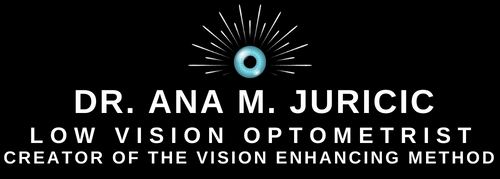In this blog section we we shine a spotlight on two prevalent low vision conditions: Glaucoma and Retinitis Pigmentosa. Both conditions affect peripheral vision, presenting unique challenges to those living with them.
Despite the challenges they present, there is hope, education, and support available for those living with these conditions.
Glaucoma:
Glaucoma is a progressive eye condition that damages the optic nerve, often due to increased pressure within the eye. It's important to note that glaucoma typically develops slowly and without noticeable symptoms in its early stages, often referred to as the "silent thief of sight," may sound daunting, but early detection and management can significantly slow its progression. This group of eye diseases targets the optic nerve, often starting with peripheral vision and advancing to central vision if left untreated.
However, with advancements in treatment options such as medications, laser therapy, and surgical procedures, many individuals with glaucoma can maintain their vision and quality of life.
- Regular eye exams are key to catching glaucoma early and preventing vision loss, offering hope and proactive strategies for managing this condition.

Retinitis Pigmentosa (RP):
Individuals with Retinitis Pigmentosa often experience tunnel vision, where their peripheral vision gradually narrows over time. The condition usually begins in childhood and can vary greatly, with symptoms often developing between the ages of 10 and 30. Unfortunately, there is no standard therapy for retinitis pigmentosa, but ongoing research offers hope for potential treatments in the near future. Management strategies may include low vision aids, adaptive technologies, and lifestyle modifications to maximize remaining vision and maintain independence.
While Retinitis Pigmentosa may present challenges, it's essential to approach it with optimism and resilience. Despite its complexity, ongoing research and advancements in treatment offer promise for individuals with Retinitis Pigmentosa. From gene therapy and stem cell research to innovative visual aids and rehabilitation techniques.

Both Glaucoma and Retinitis Pigmentosa share the commonality of affecting peripheral vision, albeit through different mechanisms. Understanding these conditions and their impact is essential in providing support and resources to those affected.
Join Us In Raising Awareness
We invite you to join us in shining a light on Macular Degeneration, Stargardt's disease, Glaucoma, RP, and all forms of low vision. Spread the word, and share your stories, if you have a loved one or somebody who needs to read this or get more information about it share this information with with them and advocate for greater understanding within our community. Together, we can make a meaningful difference in the lives of those affected by low vision.


